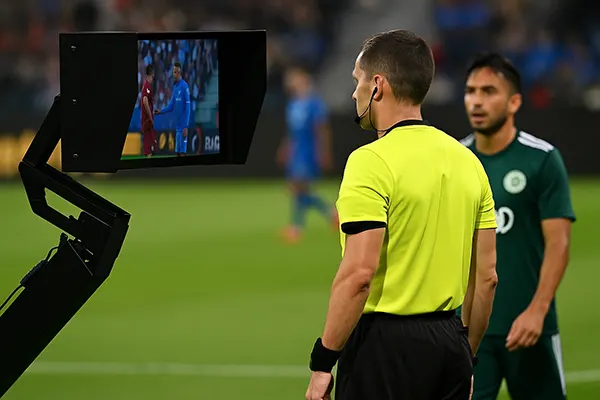
The Impact of VAR on Football Betting Results: Statistics and Trends (2018–2025)
Video Assistant Referee (VAR) has redefined modern football since its official introduction in 2018. With its promise to deliver more accurate decisions, the technology has not only influenced the flow of matches but also dramatically altered betting dynamics. Understanding the correlation between VAR interventions and betting outcomes is essential for both casual punters and professional analysts.
How VAR Has Changed Match Outcomes Since 2018
Since its rollout in the FIFA World Cup 2018 and gradual adoption across major leagues, VAR has significantly shifted how games unfold. One of the primary effects has been the reduction of refereeing errors. According to FIFA data, incorrect decisions dropped by nearly 85% in matches with VAR. Penalty awards and disallowed goals have seen the most dramatic shifts.
For instance, in the Premier League, the 2019–2020 season saw a 22% increase in penalties compared to the previous year. Serie A witnessed similar patterns, with over 130 VAR reviews in a single season affecting final scores. This influx of revised decisions alters traditional betting lines, especially markets like “Both Teams to Score,” “First Goal Scorer,” or “Over/Under Goals.”
Moreover, bettors have noticed increased uncertainty in live betting markets. A seemingly valid goal may be ruled out minutes later, affecting odds and strategies in real time. The introduction of delay windows in betting platforms has become a necessity to prevent manipulation or unfair advantages stemming from delayed VAR decisions.
Betting Market Adjustments in the VAR Era
Bookmakers have been forced to adapt their models to accommodate the effects of VAR. Pre-VAR algorithms heavily relied on historical data, referee tendencies, and team styles. With VAR in place, bookies now include probabilities of goal reversals and penalty awards in real time. This makes live odds more volatile but also more reflective of real match conditions.
In response, some bookmakers introduced specific markets tied directly to VAR — such as “Will VAR be used?” or “Number of VAR reviews.” While niche, these bets have gained traction among experienced punters who study league-specific trends. La Liga, for instance, averages more than 4 VAR reviews per game — a factor that can heavily influence late goals or red card decisions.
Additionally, the payout percentages have slightly decreased in certain markets to cover potential risks associated with VAR’s unpredictable nature. Bettors must now calculate an extra margin of uncertainty, particularly in accumulators where a single VAR decision might swing the result of multiple selections.
Statistical Trends in VAR Usage and Betting Impact (2018–2025)
From 2018 to early 2025, football leagues worldwide have published comprehensive VAR data. According to Opta, by February 2025, over 7,000 matches across top-tier European leagues have included VAR. Of those, nearly 17% featured goal reversals, and 11% resulted in overturned red cards or penalty decisions.
The Bundesliga boasts the most efficient VAR system, averaging just 55 seconds per review with a 94% accuracy rate. The Premier League has improved its process as well, reducing controversy and increasing betting confidence. In contrast, VAR adoption in some South American leagues has been inconsistent, leading to betting hesitancy in those markets.
For bettors, these trends mean certain leagues are more “VAR-sensitive” than others. Smart players now analyse which referees are more likely to consult VAR and which teams benefit or suffer most from such decisions. The correlation between VAR frequency and match volatility is becoming a metric in predictive betting models.
Real-World Betting Outcomes Affected by VAR
Several high-profile matches illustrate VAR’s dramatic impact on betting slips. In the UEFA Champions League 2019 Round of 16, Manchester United’s stoppage-time VAR-awarded penalty against PSG overturned many bets placed on PSG to qualify. Similarly, during EURO 2020, a number of favourites lost due to VAR interventions affecting goal margins or disallowed goals.
Statistics from BetRadar show that in matches with VAR incidents, the average shift in live odds is 17–25% following a review. Bettors focusing on live trading have started to build models based on historical VAR timings and incident frequencies to better anticipate such shifts and hedge accordingly.
Importantly, bettors also face psychological impacts. Reversed decisions can lead to “tilt” — emotional responses that impair decision-making. Understanding VAR patterns can help minimise such risk and improve long-term betting discipline.

How to Adapt Your Betting Strategy to the VAR Landscape
Given the substantial effect of VAR on football dynamics, adapting your betting strategy is no longer optional. First and foremost, live betting must now account for potential delays and sudden shifts in outcomes. Avoid placing quick bets after goals or penalties until confirmation is complete.
Another smart adjustment is focusing on pre-match statistics related to VAR usage. Researching specific referees’ tendencies, such as how often they rely on VAR and in what match situations, can be valuable. Similarly, some teams have developed reputations for frequent involvement in controversial VAR moments, which may skew certain bet types.
It’s also advisable to diversify your betting markets. Instead of focusing purely on goal or result-based markets, consider corner bets, offsides, or first-half outcomes, which are statistically less affected by VAR decisions. This approach reduces volatility and creates opportunities for more consistent returns.
Looking Ahead: VAR and Betting Beyond 2025
While VAR is likely to remain a staple in professional football, advancements in AI and semi-automated offside detection systems are already shaping the next wave. By late 2024, FIFA trialled AI-based VAR enhancements in Club World Cup matches with promising results in terms of speed and accuracy.
For bettors, this means even greater changes ahead. Faster decisions may lead to reduced delay windows in betting platforms, enabling a more fluid betting experience. However, it also demands sharper analytical skills, as odds may adjust more rapidly to confirmed VAR actions.
Ultimately, staying informed and agile will be the key to succeeding in the VAR era. As technology evolves, so too must betting strategies. Keeping abreast of new protocols, league adoption rates, and rule adjustments ensures that punters retain an edge in an increasingly dynamic market.



